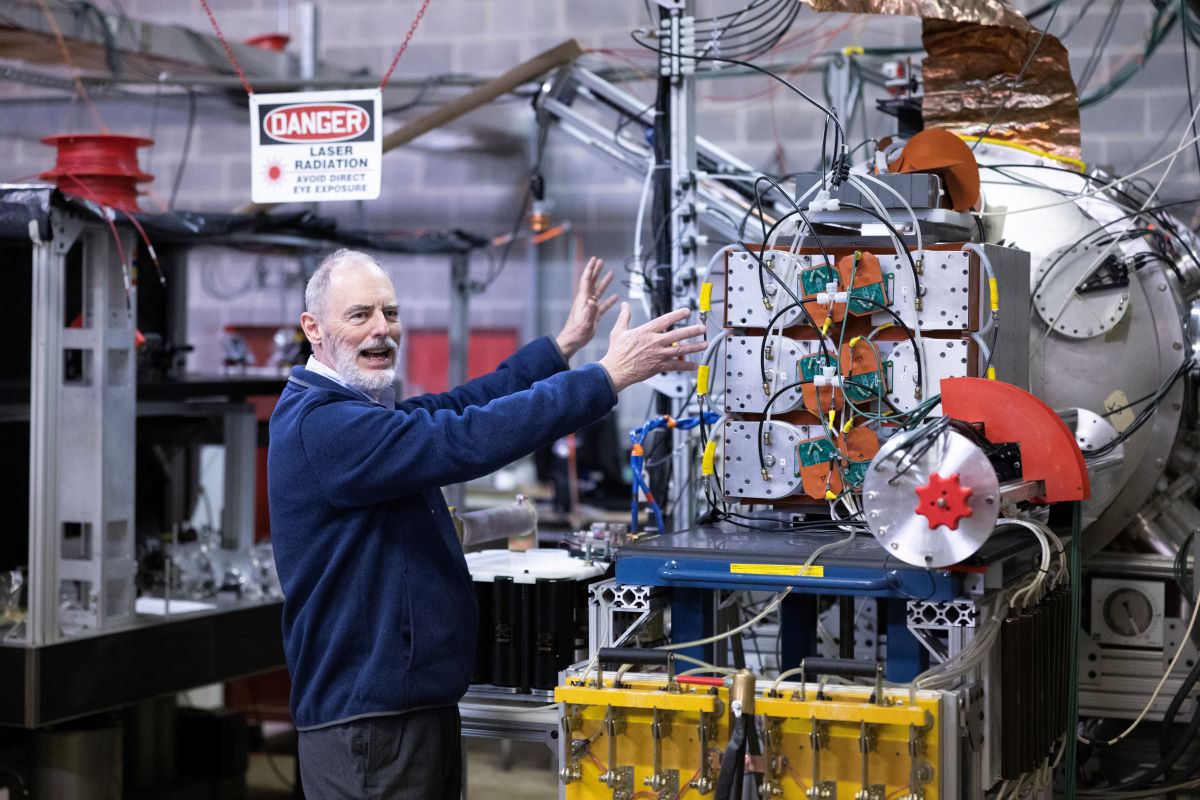In Chantilly, Virginia, five-person startup NearStar Fusion says it’s one to watch in the fusion energy space.
“No one has cracked the code completely on fusion yet, but we think that because of our expertise in plasma railguns, we have a unique approach that will get us there faster than the others,” CEO Amit Singh told Technical.ly.
You might remember Singh from Asymmetrik, the Maryland analytics company. But earlier this year, he teamed up with NearStar’s founder and chief scientist, Doug Witherspoon, a plasma physicist. Witherspoon got the idea for NearStar while doing fusion experiments with HyperJet Fusion, NearStar’s sister company, and saw there was a chance to go beyond experiments and into something commercially viable. The company recently received grants from the National Science Foundation, the Virginia Innovation Partnership Corporation and the Fairfax Founders Fund.
In fusion energy, Singh said the challenge is putting out more energy than you take in. Specifically for a commercially viable power plant, that means putting out 15 to 20 times more energy than what’s put in to create said output. Many companies attempt to use lasers for this, Singh said, but NearStar uses the plasma railgun, which takes less energy input.
Something unique about this method? It won’t require folks with a Ph.D. to work an eventual power plant, Singh noted. NearStar would instead upskill car mechanics, HVAC and maintenance workers.
“What’s unique about NearStar is that everything we need to build the fusion power plant already exists on planet Earth,” Singh said. “So, in a lot of ways, we’re kind of like the Wright brothers — we shouldn’t be the first to flight, but we think we will be because our design and our architecture are so much more simple.”
NearStar is funded through grants, angel investors and a $130,00 crowdfunding campaign. The company is also raising a $10 million seed round, with $2 million of that earmarked as a pre-seed round with a discount for investors.
With the seed round, NearStar plans to hire approximately 20 scientists and engineers and break even around 2028.
“When you’re talking about fusion energy, it’s a long-term plan,” Singh said. “We always tell ourselves, ‘You’re not going to code yourself out of climate change,’ you need deep tech solutions to really address climate change.”
According to Singh, fusion is a safe form of energy and the Nuclear Regulatory Commission recently ruled to develop new regulations for the technology. In the long term, he sees fusion opening the door to powering AI and cryptocurrencies, but also for potable water and composting.
“You can imagine a future where, instead of having these power plants in these faraway places for cities, you could literally have a power plant underneath a shopping center or a city park,” Singh said. “You build a much more robust grid that way because now you’re not transferring energy over long transmission lines and you build much more resilience into the grid.”







